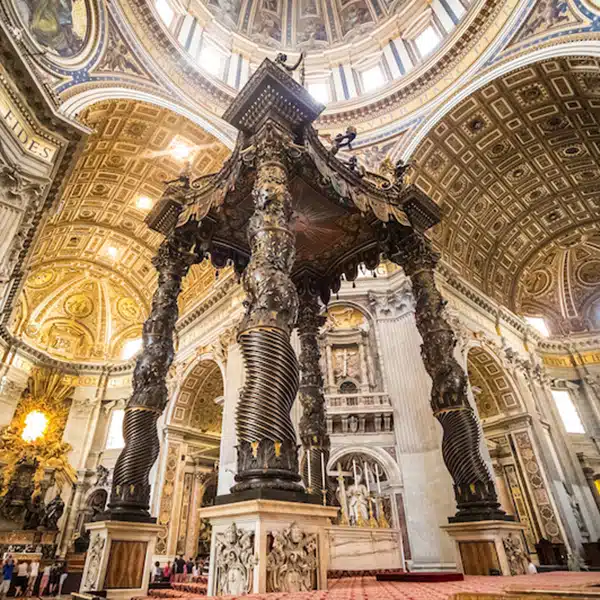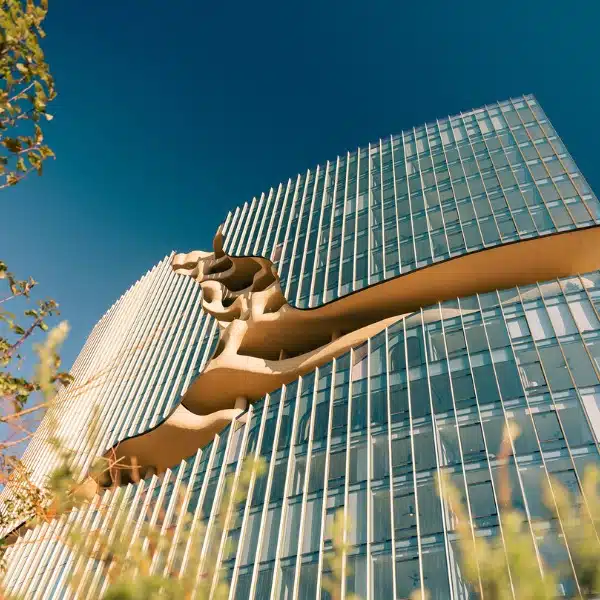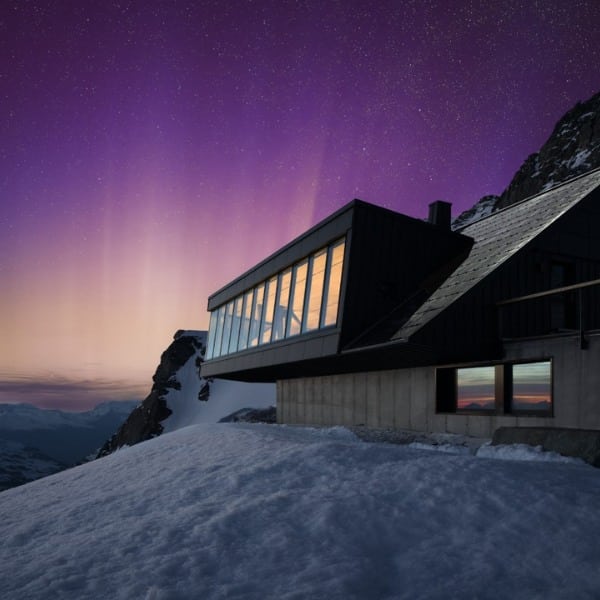
Photo: Stock Photos from Holly Guerrio/Shutterstock
Buzzwords like sustainable architecture, green architecture, and environmental architecture are mentioned in almost every large-scale building project. While widespread adoption of environmental practices is certainly a great thing, it can be difficult to keep up and understand what makes a good sustainable building.
Accountability is important when talking about green architecture. Sometimes, architects, like all other professionals, can become guilty of greenwashing, or the practice of misrepresenting a project or item as less harmful to the environment than it actually is. Other times, despite best intentions, planned metrics for green buildings do not always work out. For both these reasons and many more, we need a way to keep track of our buildings to plan for a better and greener future. So, how do we do that? One way is through a third-party certification system.
There is a lot that goes into certifying buildings as sustainable. Read on to learn about how that happens and the different standards that exist today.
What is a Third-Party Certification System?
The phrase itself is certainly a mouthful. It simply means a rating system that is managed by an objective third party. In architecture, LEED is the most well-known third-party certification system. Benefits to third-party certification systems like LEED or the Living Building Challenge include a baseline for sustainable or “green” buildings. It is also a selling point that motivates clients to take on new sustainable practices that result in a more environmentally friendly project.
Popular Third-Party Certification Systems
LEED

If you have heard of any green building standard, you have probably heard of LEED. It stands for Leadership in Energy and Environmental Design and is the most well known and widely used rating system. LEED is operated by a non-profit called the USGBC, or U.S. Green Building Council. In some places, new public buildings are mandated to achieve a certain level of LEED certification. LEED accounts for many types of construction projects including new building and construction, interior design, operation, neighborhoods, and cities.
There are four levels of certification. Each is defined by how many “points” a project was able to earn. Designers and owners can plan for whichever credits they think they can meet in order to reach the level of certification. Credits are gained across the categories of location and transportation, materials and resources, water efficiency, energy and atmosphere, sustainable sites, and indoor environmental quality. More points can be earned for innovation in design and regional priority. Aside from the credits, buildings must also meet some prerequisites that do not go towards the number of points listed by certification level.
- Certified: 40-49 Points
- Silver: 50-59 Points
- Gold: 60-79 Points
- Platinum: 80+ Points
Some critics worry that LEED does not go far enough to ensure that all buildings are really environmentally friendly. This is because points can be earned for less critical design elements like the installation of bike racks while some categories that impact the energy usage or overall carbon footprint are left unaddressed. Other criticisms stem from the fact that some projects do not in reality meet the performance standards expected when certification was granted.
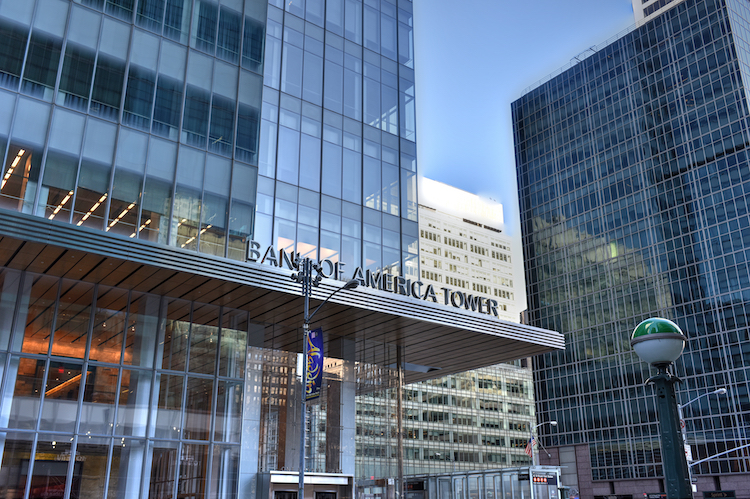
Bank of America Tower designed by COOKFOX Architects in New York, New York. (Photo: Stock Photos from Felix Lipov/Shutterstock)
One popular example of a questionably sustainable building is the Bank of America Tower in New York City, which despite being LEED Platinum certified and achieving wide recognition for its sustainable practices, is actually less efficient than other lower-rated buildings. Admittedly, the harsh criticisms of the building may be an oversimplification of the complicated process of measuring energy usage for a building that requires so much energy to function. The design, after all, is certainly more sustainable than a traditionally designed office building of its kind.
Living Building Challenge
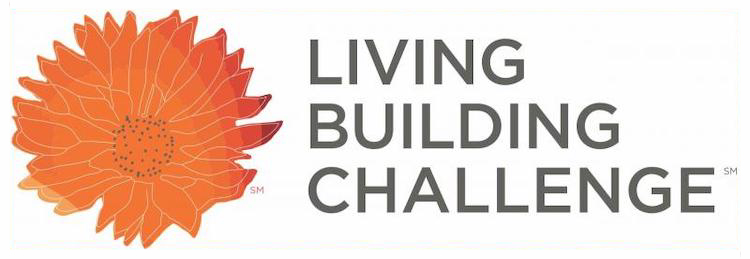
The Living Building Challenge is organized by ILFI, or the International Living Future Institute. It is notably more difficult to achieve than many other popular certification systems as many buildings attempt to surpass the rule of minimizing negative environmental impact, and instead intend to have a positive environmental impact. Though living building certification is a difficult thing to achieve, buildings, cities, and other projects can achieve partial certification by achieving certain “petals” or sustainability requirements.
The performance categories—or petals of the LBC flower—include place, water, energy, health and happiness, materials, equity, and beauty. Twenty imperatives exist across these seven categories and encourage designers and builders to push the boundary of sustainable design. Sometimes, accommodations must even be made for certain imperatives because local code or law does not yet allow certain practices necessary for LBC certification—like health code limitations for rainwater usage. In some cases, an LBC certification may help establish new rules that will benefit later sustainable buildings in its area.
View this post on Instagram
The Bullitt Center by Miller Hull in Seattle, Washington is an example of an LBC-certified building.
Though it is certainly less accessible than other certification systems on this list, the Living Building Challenge is helping establish a radical baseline for sustainable buildings. It is best summarized by the question they use to introduce the latest version of the challenge, “What if every single act of design and construction made the world a better place?”
WELL Building Standard
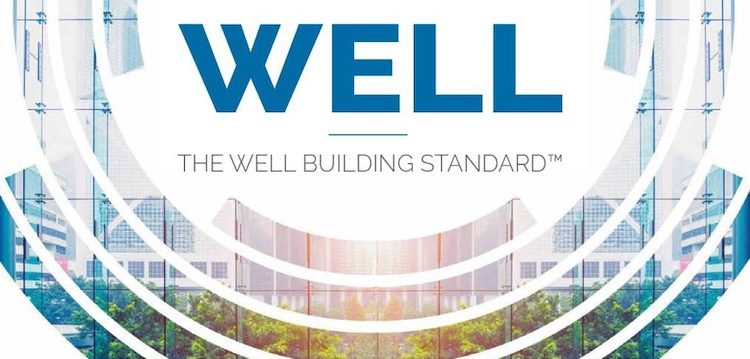
Research from the Environmental Protection Agency tells us that Americans spend an average of 87% of their lives inside buildings. Those interior environments have a serious impact on our health and our daily life. This next third-party certification system takes in to account how buildings affect human health.
The WELL Building Standard analyzes the sustainability of a building based on how it affects the human inhabitants. It is managed by the International Well Building Institute, or IWBI, which seeks to “improve human health and wellbeing through the environment.”
View this post on Instagram
The Río 55 Madrid Business Park by L35 Architects in Madrid, Spain is one example of WELL certified building.
The standard is based on seven core concepts: air, water, nourishment, light, fitness, comfort, and mind. These categories are founded on medical research on the relationship between interior environments and their impact on the health of their occupants.
Passive House

Passive House, or Passivhaus, is a certification system focused solely on the energy efficiency of a building. Though energy usage is an important part of many other certification system, Passive House projects often define this metric early on in the project and allow this need to drive the design.
View this post on Instagram
The headquarters of Métropole Rouen Normandie by Jacques Ferrier Architecture in Rouen, France is an example of a Passive House building.
Passive House buildings are designed to meet five science-backed principles for a well-managed interior environment:
- Uses continuous insulation throughout envelope without thermal bridging (heat transferred through a material)
- An airtight building envelope with no loss of interior air or penetration of outside air
- Uses high-performance windows and doors and manages solar gain
- Uses some form of balanced heat- and moisture-recovery ventilation
- Uses a minimal space conditioning system
Green Globes

The Bioscience Research Laboratories Building (BSRL Building) at the University of Arizona by Zimmer Gunsul Frasca Architects in Tucson, Arizona is an example of a Green Globes building. (Photo: University of Arizona)
Green Globes defines itself as “a business-friendly and affordable alternative to LEED.” Green Globes also notes that unlike LEED, the certification system has completed an American National Standard using an ANSI-approved consensus process. It claims to work more closely with businesses to achieve sustainability goals on the basis that green projects have a higher potential of achieving sustainability goals when more closely supported by a team to help them meet those metrics.
U.S. Green Building Council: USGBC | Instagram | Facebook | Twitter | LinkedIn
International Living Future Institute: Website | Instagram | Facebook | Twitter | LinkedIn
International WELL Building Institute: Website | Instagram | Facebook | Twitter | LinkedIn
Passive House Institute US: Website | Instagram | Facebook | Twitter | LinkedIn
Green Building Initiative: Website | Instagram | Facebook |Twitter | LinkedIn
Related Articles:
Zaha Hadid Architects Design a Futuristic Open-Base Tower in Shenzhen Bay
Architects Propose World’s Tallest Tower in NYC That Eats Up Carbon
The Tulip: London’s Controversial Tourist Attraction
Singer Akon is Spending $6 Billion to Build a “Real-Life Wakanda” in Senegal













































































